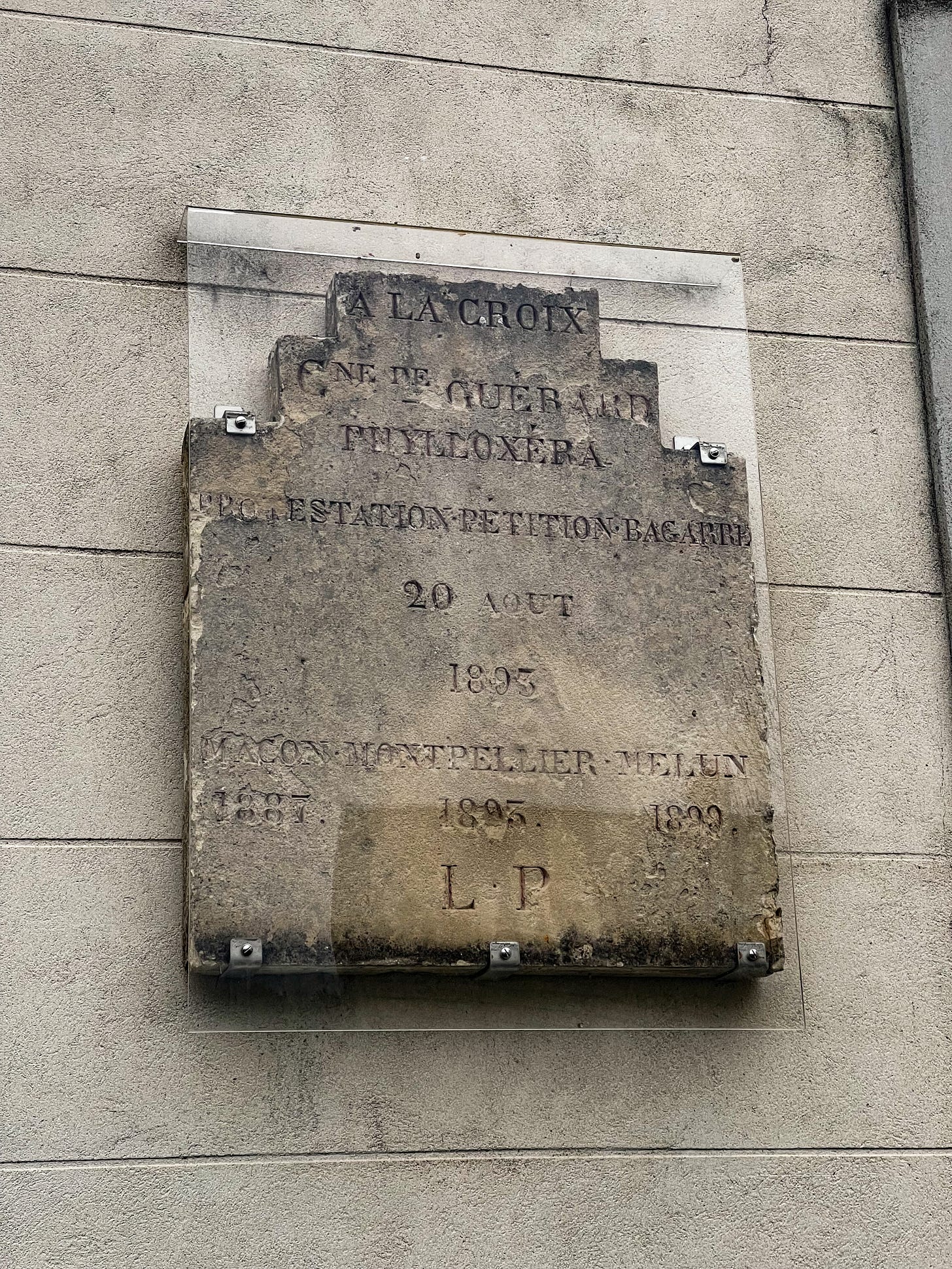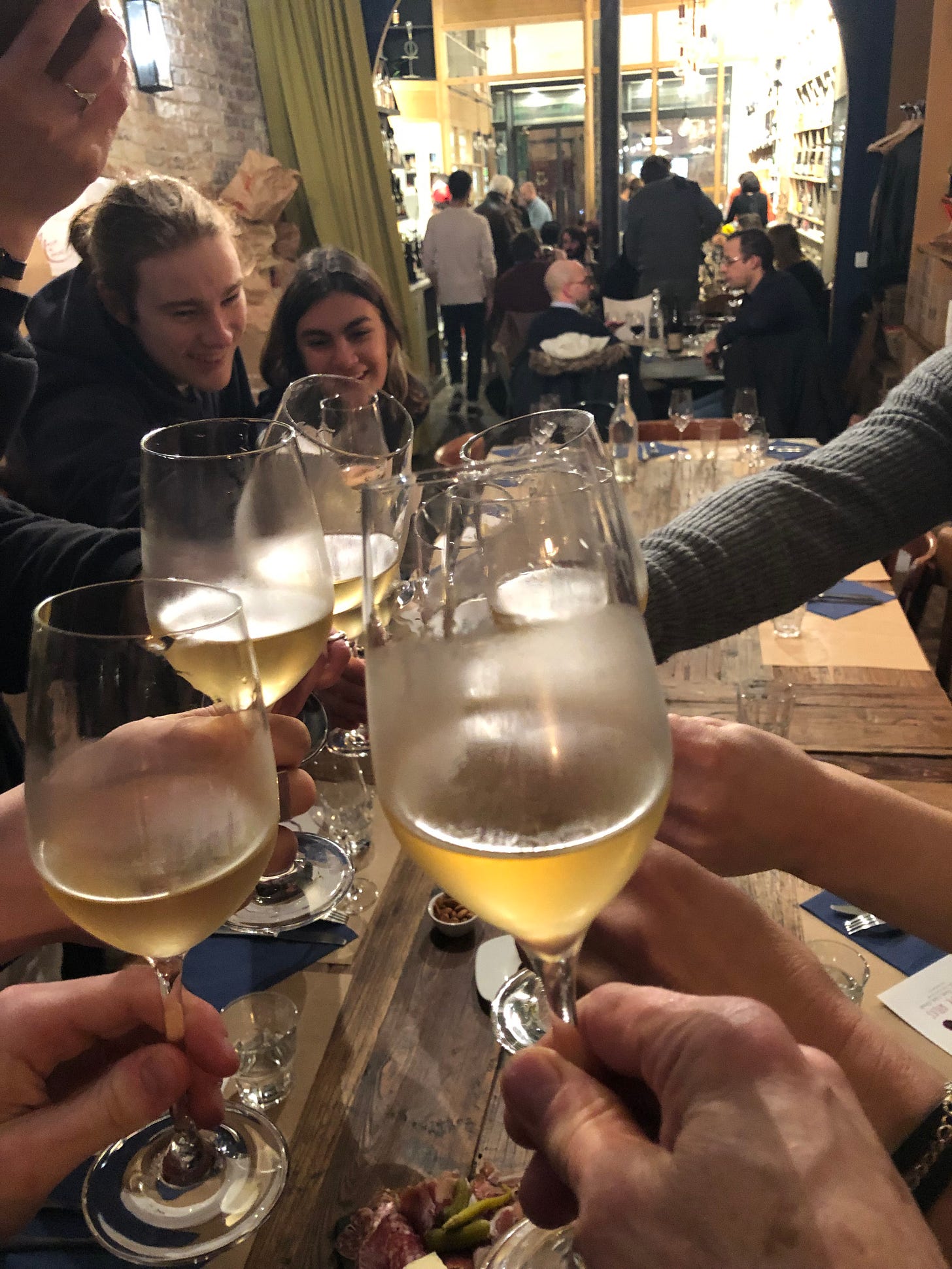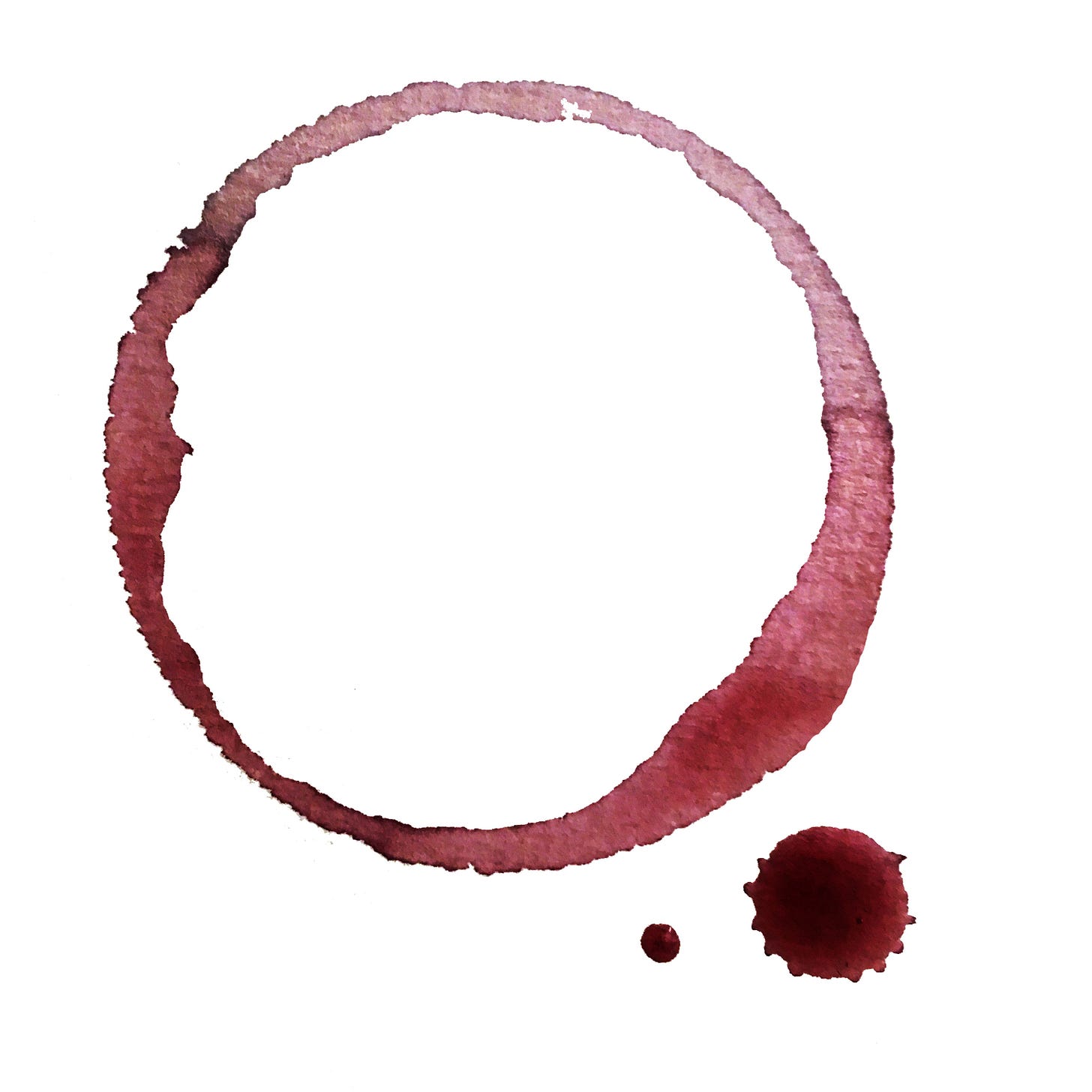This is my 52nd uninterrupted Substack post. The year has been marked by one of the worst harvests in perhaps 200 years (climate change bringing frost, hail and persistent rains), the joys and deceptions of the Olympic Games in Paris, a US election that has left a lot of people in shock and disbelief, political, social unrest, and (at least) two interminable wars.
There have also been a lot of memorable shared wine experiences, which in these troubled times provide welcome mirth, ‘ivresse’, and sometimes, if you’re able to feel that way, deeper spiritual connection. If you need an antidote to the stresses of these uncertain times, we invite you to join us on a wine walk (or an in-depth regional wine tour) to rediscover the solace that can be found in nature and the joys of living wines.
Thank you for your ongoing support in reading my Substack. A paid subscription (5€ a week) is less than the cost of a glass of wine, so might it not be time?
Paris Wine Walks is all about the hidden vineyards of Paris (as well as wine in general), but there’s a bigger story that we want to share, that includes, and goes beyond the city limits. The Île-de-France, the region around Paris, was once the largest vineyard region in the entire world, but you won’t find it on a wine map of France. It all but disappeared over 100 years ago and was pretty much forgotten by practically everyone. But a quiet revolution has been under way to restore the lost reputation of these forgotten vines. Since 2016 the Île-de-France has again become an IGP (Indication Géographique Protégé) with new vineyards being added yearly.
Among the first is Bois Brillant, created by Daniel Kiszel in 2003, many years before the idea of an IGP (officially granted in 2016) was even considered possible. Kiszel was among those who worked towards official recognition, lobbying the authorities along with the SYVIF (Syndicat des Vignerons d’Île-de-France) for over twenty years. In addition to the Île-de-France IGP, Guérard is one of five communes (Paris, les Coteaux de Suresnes Mont-Valérien, les Coteaux de Provins, les Coteaux de Blunay and Guérard) with the distinction of being recognised as a DGC (denomination géographique complémentaire – complementary geographical denomination).
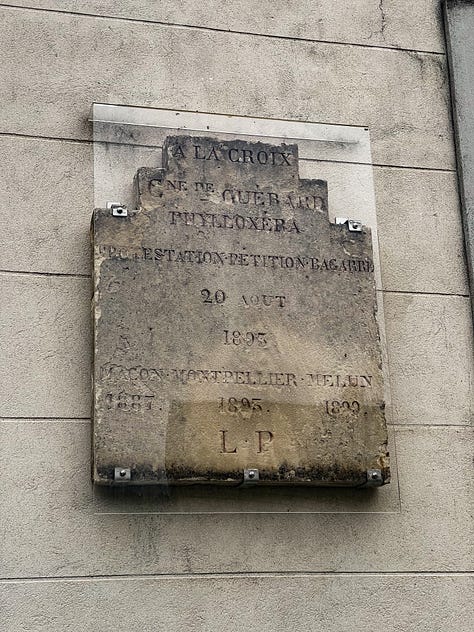
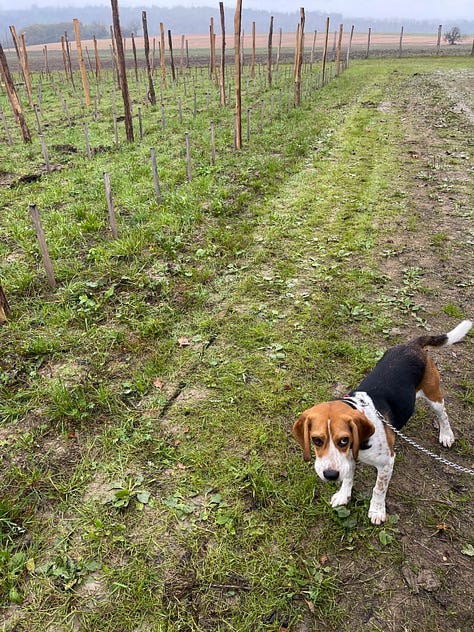
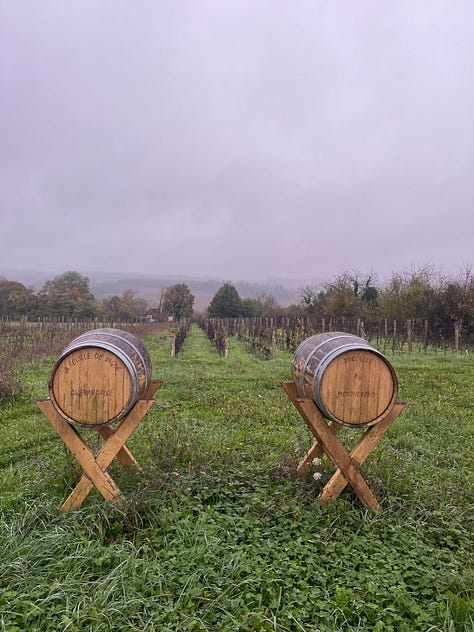
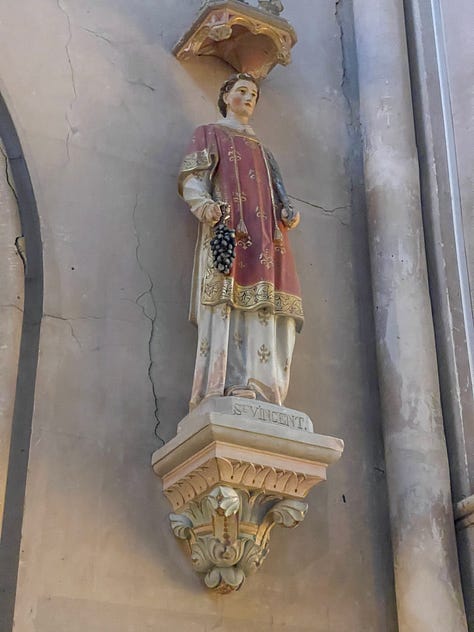
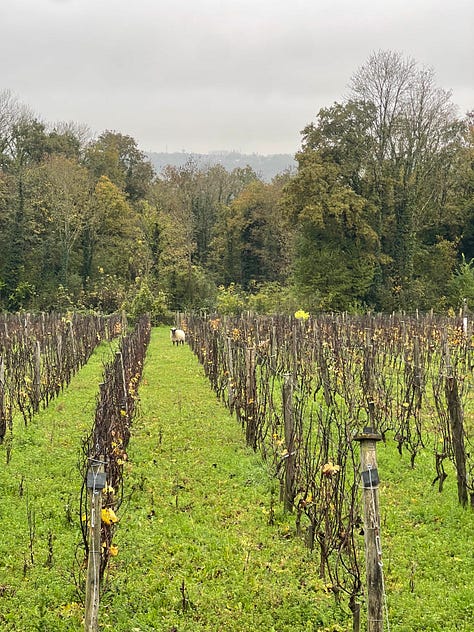
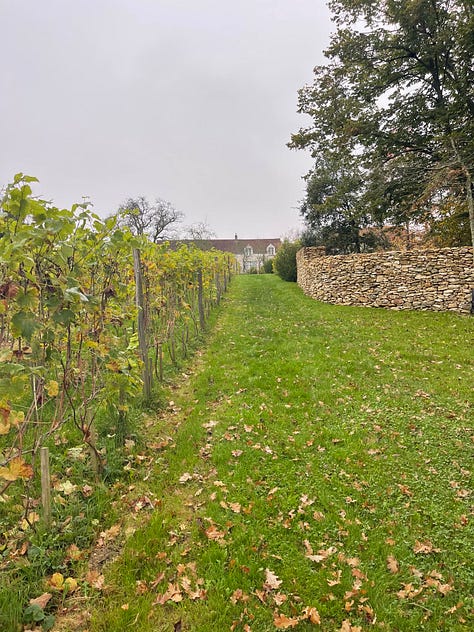
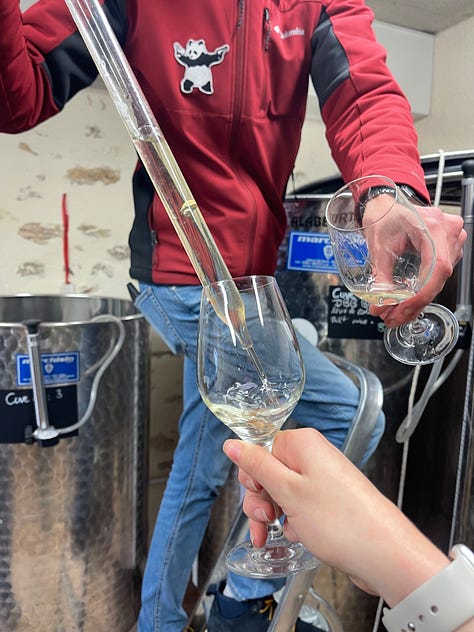
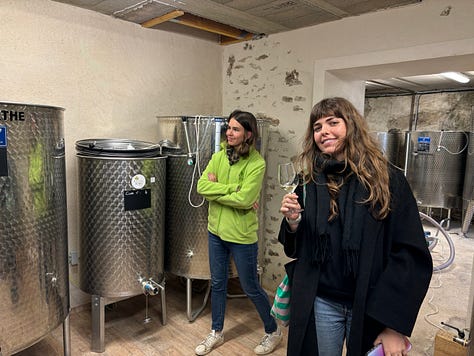
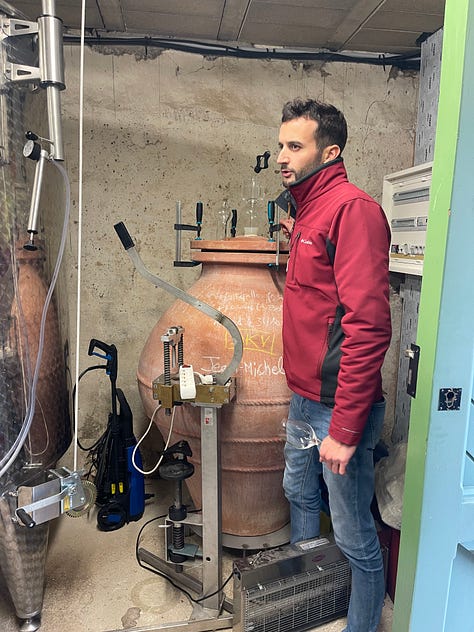
We visited the domain on 8 November (which was the Saint Geoffroy), a dreary, overcast day, and were met by Daniel Kiszel and his dog Ukko (god of the sky, weather, harvest, and thunder across Finnic paganism) at the soon to be demolished train station of Guérard. This was my fourth visit to the domain having first visited in the summer of 2019, participated in the harvest in 2020 and attended a press gathering in 2021.
We began our tour in the village of Guérard, stopping to admire various wine-themed sculptures as the village was once the centre of an area of over 600 hectares of vines. Among these is a historic plaque marking the dates when phylloxera devastated and decimated the vines of Guérard (20 August 1895) Macon (1887), Montpellier (1895) and Melun (1890).
Today, Kiszel is working on making Guérard the number one wine village of the Île-de-France. A wine museum and pedagogical centre is in the planning stages and a group of seven investors have been busy planting vines, expanding Kiszel’s original vineyards from 1.5 to 3.8 hectares. This new consortium is called Domaine des Fortes Terres and the first harvest is expected for 2027.
Tristan, Daniel Kiszel’s youngest son, invited us to taste some of the wines of Bois Brillant in vat and barrel. The first wine, a Chardonnay drawn from a stainless steel vat was crisp and resinous with lovely citrus notes that was rich and unctuous on the palate. The Chardonnay Vielles Vignes (old vines, which in this case are only 20 years old) had great maturity with notes of almond and ripe pear. The star was the Pinot Noir from barrel, which had gorgeous black fruit aromas, great depth and complexity with rich pinot flavours. All of these were delightful wines that are already showing great promise.
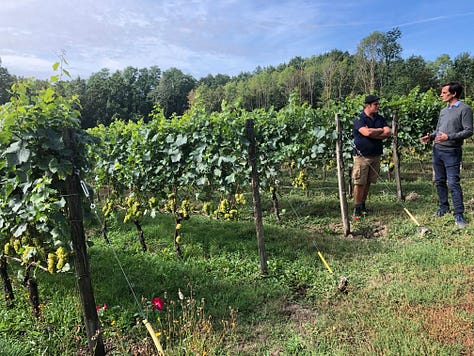
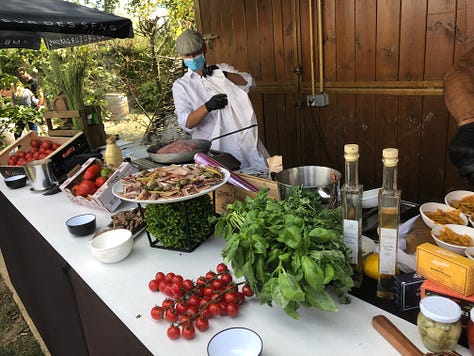
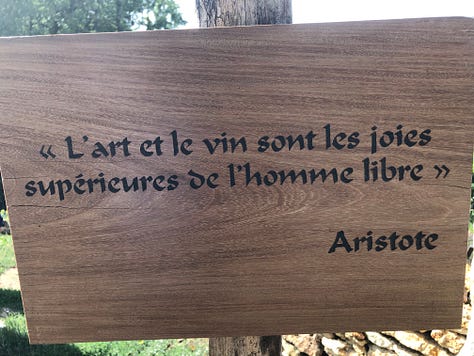

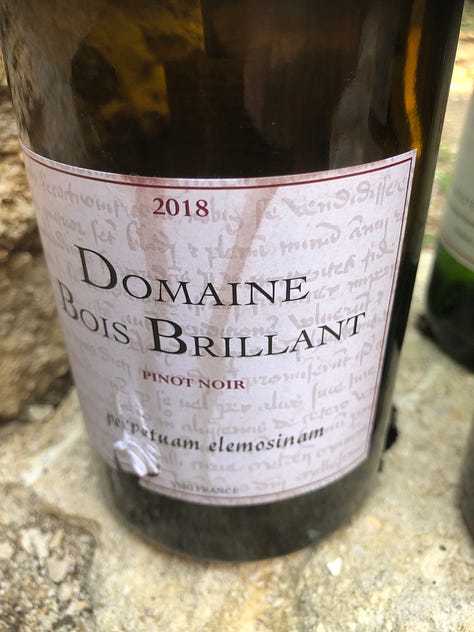
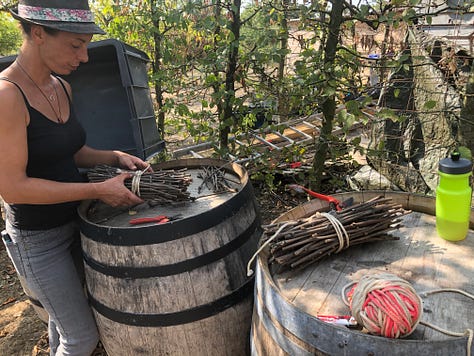
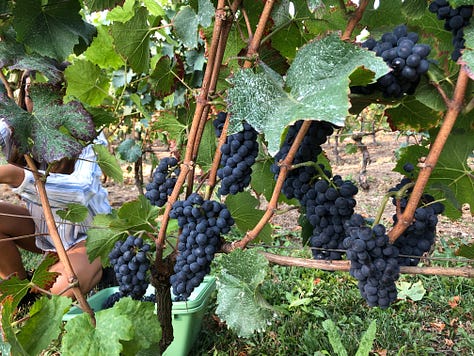
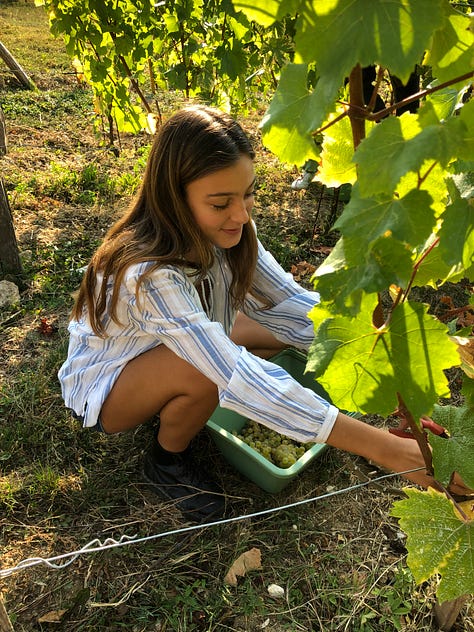
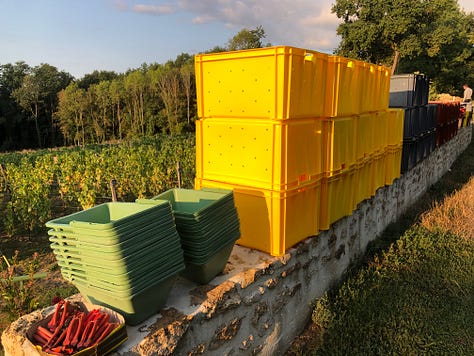
The buzz around the world is that climate change will be beneficial for vineyards planted further north. It is suggested that this would make the Île-de-France the new Burgundy or the new Loire, and Burgundy, the new Côte du Rhone… Whatever truth there may be in this is disconcerting and myopic as it blithely ignores the more harrowing truth of the geopolitical impacts of climate change. The world is coming to an end? At least we’ll have wine to drink… like playing your fiddle while Rome burns.
Can we be optimistic? This is of course a matter of degree as it’s rather hard to imagine with the current political climate that we might be able to reign in this mounting disaster. The guilty pleasures of improved quality in wines, or the possibility of vineyards being planted ever farther north because of climate change might therefore be enjoyed with legitimate satisfaction if at the same time, we are consciously striving to diminish our carbon footprints. To which wines produced organically and more locally would also contribute.
The future of the Île-de-France vineyards is thus a positive negative. On the one hand, climate change encouraging better maturity and hence quality and local production feeding into the virtuous cycle of production proximity in the supply chain, and on the other, the possibility of northern planted vineyards being an irrefutable indicator of climate change. Whatever your stand on this, the vine’s capacity to expand cultural riches, introduce a more civilised lifestyle and function as a communicator, might also help to increase awareness of this far-reaching issue.
Thank you for letting me into your world and for reading the Paris Wine Walks Substack. Your support is invaluable as are your comments, suggestions, critiques, dreams, thoughts and remembrances. A little encouragement goes a long way, so please consider a paid subscription, which need cost no more than (a cheap) glass of wine per week. Or, book a wine walk!
My book, ‘The Hidden Vineyards of Paris’ (reviewed in Jancis Robinson’s wine blog, the Wine Economist, National Geographic Traveler UK, UK Telegraph) is available for purchase via our website and at anglophone bookshops and wine shops in Paris. You can also find it at the Musée de Montmartre and the Librairie Gourmande.
Wine Walks & Tastings!
Sparkling Wine Splash!
Sign up now for our special Valentine’s Day (plus before and after) blind sparkling wine tastings - February 13, 14 and 15. Our blind wine tasting of carefully selected sparkling wines invites friendly competition to see who can identify the Champagne among five fabulous sparkling wines. Book now!
Clos Montmartre - Paris in Your Glass
Paris' most famous wine producing vineyard
Latin Quarter Unbottled!
An insider's journey to the oldest wine neighbourhood in the city
Wine Your Way Through the Marais
The Marais seen through a wineglass
Saint-Germain-des-Prés
Discover the vinous spirit of medieval Paris
Paris Bottled!
Short on time? This one’s for you.




